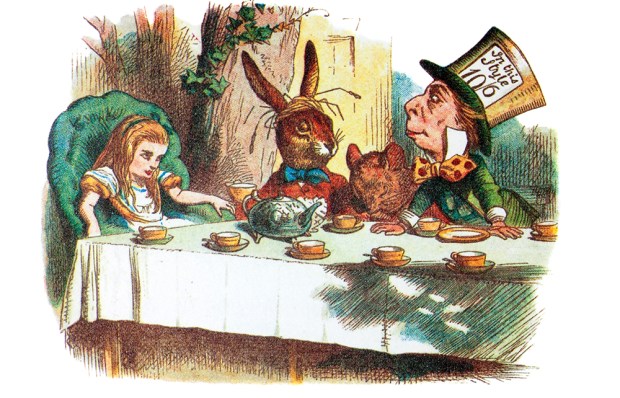A friend sent a nice postcard from Portugal showing the outside of a church covered with old blue tiles. She said it reminded her of delft ware.
That word has its own historical peculiarity. We used to call it delf, as you can find in Dickens and his contemporaries. That is because the town of Delf was spelt in the same way, taking its name from its chief canal. The Dutch shared with the English (though we have largely forgotten it) a word delf meaning ‘ditch’ — something delved or dug. But then the town added a t to its name to make it Delft, and the English followed suit in the spelling of the earthenware. Anyway, the blue of Portuguese tiles is caught in an even less likely knot of language.
Tiles in Portuguese are azulejos (the same word as in Spanish). When they hear it or read it, the Portuguese cannot help thinking of the colour blue, which is azul in Portuguese and in Spanish. But, surprisingly, azulejos and azul are not directly related.
Azul, like the English word azure, derives from the Persian lazhward, meaning ‘lapis lazuli’. The Persian word was picked up via Arabic (since Arabic speakers invaded the Iberian peninsula), and the initial l was dropped because it was mistaken for the Arabic definite article al. The word azulejo, however, seems to come from the Arabic zulug, meaning ‘polished stones’. It seems that the objects in the Middle Ages were at first more like tesserae of mosaic, not necessarily blue. The ejo bit is a diminutive, from the Latin iculum.
I found this information about azul and azulejo in the great etymological dictionary of Spanish which came out in 1980 as one of the achievements of Joan Corominas (1905-1997). That’s the name on the title page, but he is now more often known as Coromines, the Catalan version of his name, and is a hero of Catalan culture.
If you look up azulejo in the Oxford English Dictionary, which defines it as ‘a kind of Dutch glazed tile painted in colours’, you’d find the origin given as azul. But the entry hasn’t been revised since 1885. When it is, they might abandon their false blue friend.
Got something to add? Join the discussion and comment below.
Get 10 issues for just $10
Subscribe to The Spectator Australia today for the next 10 magazine issues, plus full online access, for just $10.
You might disagree with half of it, but you’ll enjoy reading all of it. Try your first month for free, then just $2 a week for the remainder of your first year.














Comments
Don't miss out
Join the conversation with other Spectator Australia readers. Subscribe to leave a comment.
SUBSCRIBEAlready a subscriber? Log in